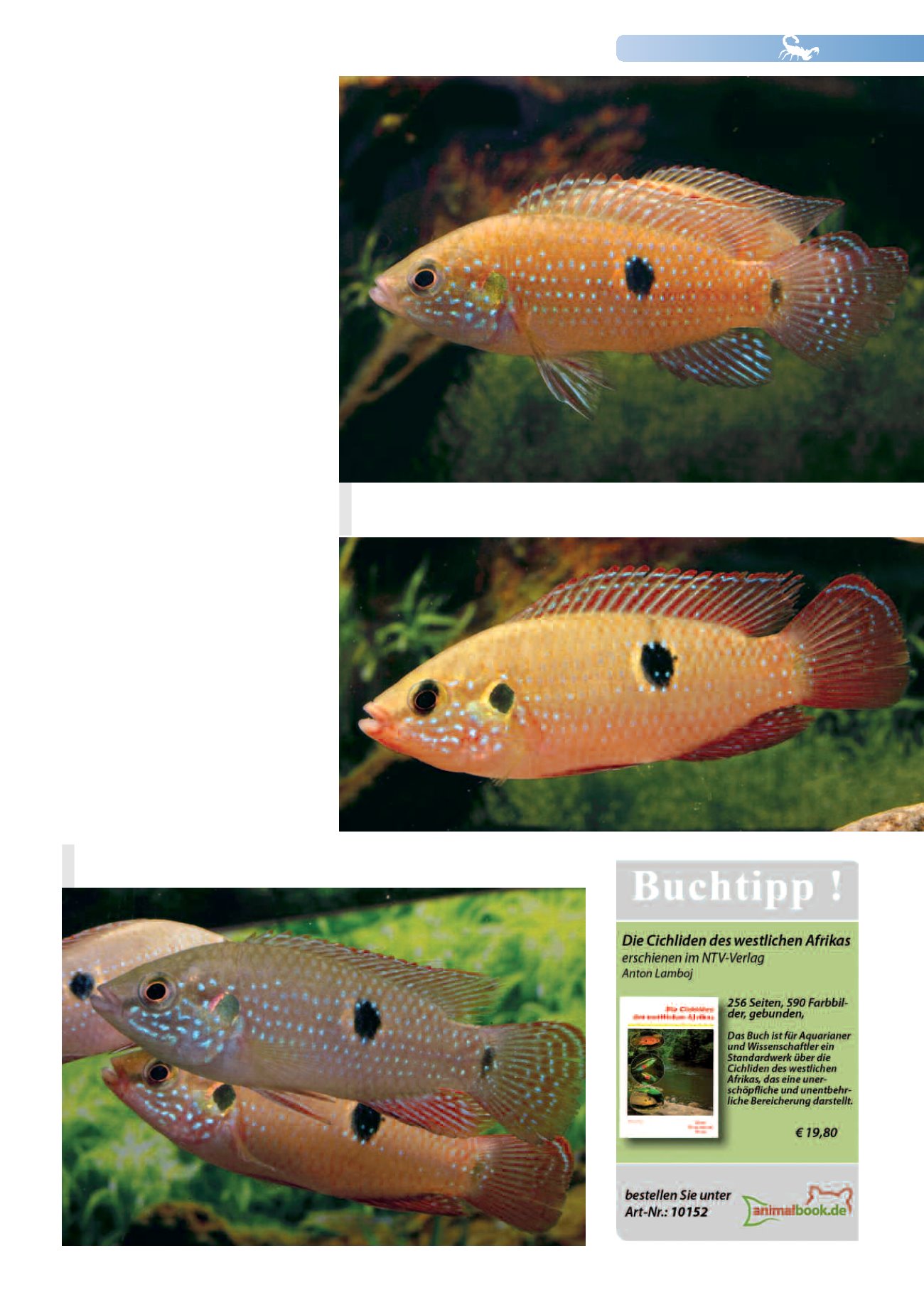
NEWS 110
5
probably
H. guttatus
crosses, as this cichlid
exhibits a wide range of color variants even
within one and the same population. While
the body shape and the form and position of
the lateral spot are fairly uniform within a
population,the coloration varies considerably.
Thus there are not only brilliant red but also
gray-green individuals as well as numerous
transitional and intermediate forms. This is
independent of sex. The number of
iridophores, ie the iridescent blue spots, is
likewise highly variable.There are specimens
with very many iridophores and also
individuals with very few, and this applies to
both the red and the gray-green fishes. The
reasons for the polychromatism - the
technical term for color variation - are a
complete mystery. Because we aquarists
always prefer to breed the fishes that are
most beautiful in our eyes - ie as red as
possible and with numerous iridophores -
and this coloration can evidently be fixed
genetically, aquarium strains look very
uniform compared to wild-caught stocks.
Aquarium Glaser has recently obtained wild-
caught
H. guttatus
from the Benue River in
Nigerian and I also took home a pair of these
fishes for comparisonwith the "FireLips".Inso
doing I simply made sure I had a pair and
deliberately ignored their coloration.
Red jewel cichlids in the aquarium
Male and female red jewel cichlids can told
apart very readily. Males are larger, and have
All the photos on this page show wild-caught
Hemichromis guttatus
that originated from the same
population and were collected at the same time. Nigeria, Delta State.
The base color of the body can tend to greenish or reddish, and the number or iridescent blue spots
(iridophores) likewise varies.


